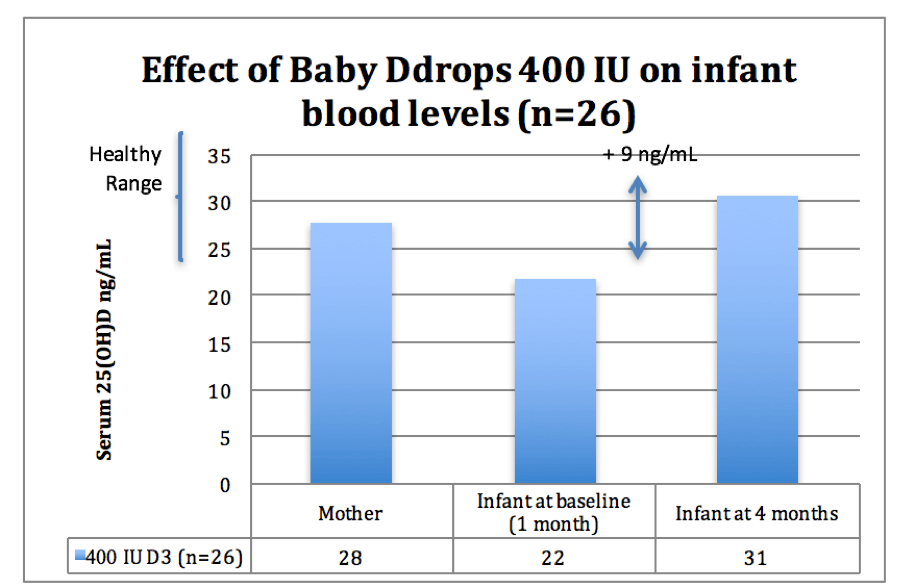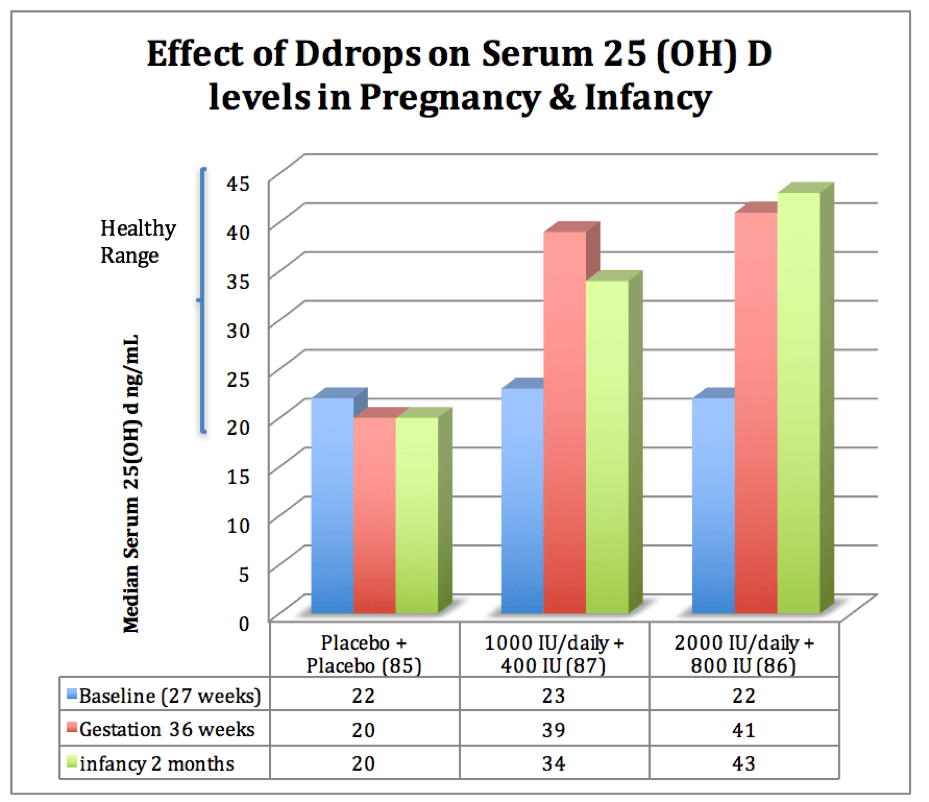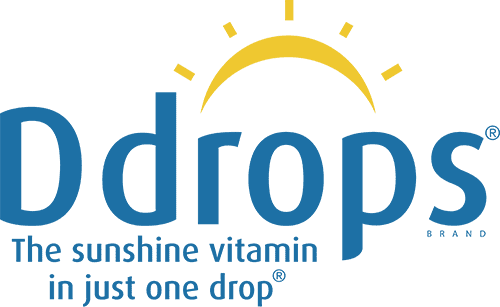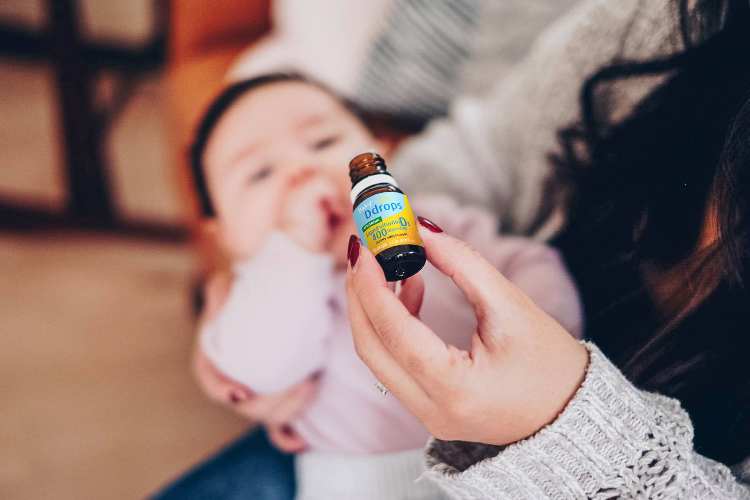March 13, 2017
It is mandatory for vitamin D brands to state the vitamin D dosage (for example 400 IU) on the outside packaging. But does that daily dose actually get into the bloodstream and what happens to it in the body? There are formal trials that have had Ddrops® as a study drug. We want to share these results from published trials:
Published clinical trial with infants:
- Healthy breastfed infants taking a daily 400 IU dose of Baby Ddrops® for 3 months experience a mean increase of 9 ng/mL or 22 nmol/L in serum 25-OH vitamin D levels[1]
 Adapted from Gallo et. al.
Adapted from Gallo et. al.
Published clinical trial with pregnancy and infants:
- Infants are given 400 IU–800 IU /day achieved 82 to 89 per cent of target vitamin D level; pregnant women taking 1000 IU – 2000 IU /day achieved 89 to 91 per cent of target vitamin D level [2]
- Researchers conclude that it is likely that supplementing both mothers during their pregnancy and infants when they are born is required to achieve target vitamin D blood levels.
 Adapted from Grant et. al.
Adapted from Grant et. al.
Why are these results significant?
Very few vitamin brands have published data that demonstrate efficacy. Even fewer products have data from studies conducted by third-party experts and published in peer review journals. It gets particularly tricky to study products in infants and pregnant women. Ddrops® products were developed by scientists and Ddrops Company is eager to help advance vitamin D research. Ddrops Company is often asked to supply vitamin D for investigative trials for the following reasons:
- Ddrops® are made in Canada in a Health Canada licensed and NSF licensed facility – meaning that procedures and numerous quality checks are in place to uphold standards of GMP (Good Manufacturing Procedures). Baby Ddrops® is also an NSF certified product.
- Ddrops Company can manufacture special doses and placebos so that researchers can structure studies utilizing different doses.
- Ddrops® products are easy to use and most people in the study can adhere to the instructions.
Claims made have not been evaluated by the FDA. This product is not intended to diagnose, treat, cure, or prevent any disease as per the FDA.
[1]Gallo, s et al. The Change in Plasma 25-Hydroxyvitamin D Did Not Differ between Breast-Fed Infants That Received a Daily Supplement of Ergocalciferol or Cholecalciferol for 3 Months. Nutr. February 1, 2013 vol. 143 no. 2 148-153 doi: 10.3945/jn.112.167858[2]Grant, C. et al, Vitamin D During Pregnancy and Infancy and Serum 25-Hydroxyvitamin D Concentration. PEDIATRICS Volume 133, Number 1, January 2014




3 ความคิดเห็น
Teknik Telekomunikasi
Scientific Evidence: Examine available scientific research and clinical studies that support or refute the effectiveness of Ddrops in improving vitamin D levels and overall health outcomes.
Greeting : Telkom University
Teknik Informatika
Dosage and Efficacy: Analyze the recommended dosage of Ddrops and assess its ability to provide sufficient vitamin D to meet daily requirements and address potential deficiencies.
Visit us Telkom University
Telkom University
Absorption and Utilization: Discuss how the body absorbs and utilizes vitamin D from liquid supplements compared to other forms, such as capsules or direct sunlight exposure.
Regard Telkom University
ทิ้งข้อความไว้
เว็บไซต์นี้ได้รับการคุ้มครองโดย hCaptcha และมีการนำนโยบายความเป็นส่วนตัวของ hCaptcha และข้อกำหนดในการใช้บริการมาใช้